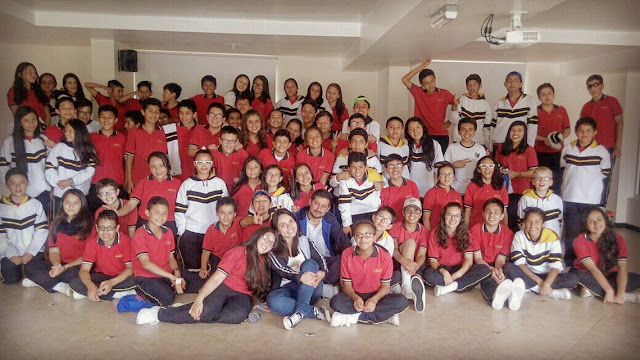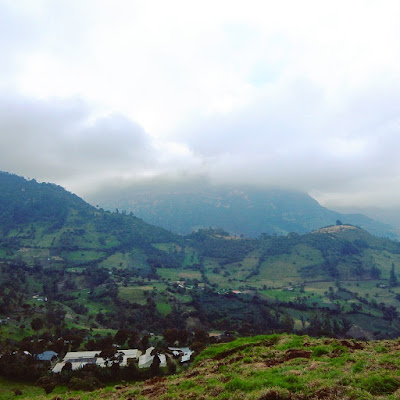 |
| My homeroom from last year along with my homeroom for this year. |
If you've been keeping up with me the whole twenty
months here, dear reader, you might have noticed that my commitment to flushing
out a post every week has turned out to be full of shit. This is partly due to other
commitments, new and old, coming to the forefront. Everyone who's admired my lanky form will be undoubtedly intrigued to know I've joined a gym. And I'll be the first to lay your curiosities to rest by acknowledging that the results are about as unnoticeable as expected. The bright side is that I'm on first name basis with management and other clients. It's like cheers, but isntead of beer and laughs you get surrounded by sweat and groans, a sad reality that reminds me of my adorable attempts to use the weight room back in college. But, moving on!
I'm now a lead homeroom director instead of the assistant, which doesn't mean a whole lot except I have a few more meetings with parents to attend, and more people have this strange notion that I have any answers to their questions about permission slips, due dates for school payments, and other logistical Jeopardy questions that I deflect with increasing ease.
I'm now a lead homeroom director instead of the assistant, which doesn't mean a whole lot except I have a few more meetings with parents to attend, and more people have this strange notion that I have any answers to their questions about permission slips, due dates for school payments, and other logistical Jeopardy questions that I deflect with increasing ease.
 | ||||||||
| Sergio, the smallest teacher, replaced with a Biology prop. |
I’ve also been appointed head JV basketball coach.
Managing to work my way up the ladder from extra defender during my first
semester here, to assistant JV coach last year to my friend, Alex, when there
wasn’t a varsity team. Head coach has provided new obstacles, as during our
first two weeks of open gym practices Steven and I had about sixty kids for
each practice. My job after that is to narrow it down to two fifteen kid
rosters for boys and girls (here’s to a week of teenagers asking why they
didn’t make the team!).
As if a regular teaching and coaching combination
wasn’t enough, I’ve also sacrificed my Saturday mornings to teach high school
seniors. Colombia’s ACT test is called the ICFES exam, and I foolishly agreed
to teach essentially a prep course on Saturdays for the next few months. While
this has not changed the customary beer(s) and dancing with coworkers after
school on Fridays, it’s sure made Saturdays an interesting math problem: If JJ
gets off work at 3pm on Friday and starts at 8:30am the next morning, how many
beers can he have without the students knowing he went out last night? You
won’t find that question on the ICFES, but I’ve aced it every week so far.
 |
| Night out with Fernanda, Alex, and Marcela |
And through what can only be described as a
hereditary lack of being able to say no (thanks, pops!) I also find myself
sacrificing what little free time I have to help tutor some of the other new
teachers at my school. Tutoring the disciplinary coordinator, Viviana, has
provided unforeseen fruits, like when she gave me a pair of nice dress shoes
that her husband got but were too big for him. Also, it keeps me on her good
side, which is helpful because it’s her job to nag teachers about paperwork,
litanies I’ve managed to avoid since tutoring her. Teaching other young
teachers like Juan Pablo and Angelica have provided mostly funny moments, since
they always want to learn new English swear words. One day, while explaining
the difference in vowel sounds in similar words, I found I had written kiss, keys on top of it, eat on top of bitch, beach. After reading the first column aloud, our new
greeting for each other was solidified when we realized we were telling each
other to “kiss it, bitch.” I still don’t claim to be a decent teacher.
 |
| My "getting burned" face. |
I’ve also managed to forget what free time is like
outside of school as well. Back in January, my friend Karen – who I’d met in
Cartagena – was still lingering in Bogota after her dad’s car needed some
tuning up in the shop. She had invited me to Bogota’s theme park that I had yet
to experience, Salitre Magico. I convinced Nate and Steve to join and she
brought her sister and cousins, and we all had a great time getting sick on
rides, eating cheap fast food, and getting sufficiently sunburned in the Bogota
sun.
 |
| Photos are hard. |
Karen is a tiny red head who eats like a bird and
whose fierce independence comes from having lived alone for almost three years
when she was sixteen, since her father’s job brought the rest of the family to
the coast but she wanted to finish at her school. Her lack of interest in my
foreignness was a breath of fresh air, as one tends to bore oneself after
explaining what American life, food, family, housing and economy is like for
the umpteenth time. We chatted mostly about nothing, and saw La La Land in a
theater mostly by accident. We were bored, and the small theater had only four
movies going. Neither had ever heard of this new movie, but I knew that Ryan
Gosling and Emma Stone were good actors, so we went for it. Then, when the film
opened with a song and dance, Karen and I turned to each other with a “wtf is
this?” face. I then had to confess that I not so secretly enjoy musicals. As a
vegan she never judged me for my carnivorous ways, and even dragged me to a
vegan festival where we were educated on the benefits of a plant-based diet.
Oh, and where the next anti-bull fighting rallies were going to be held and how
meat is murder. But while the food they had was oh so morally tasty, while you
can take the kid out of Stearns County, you can’t take the Stearns County out
of the kid. Unfortunately, she had to return to the coast with her family to
work, joining a long list of great people I’ve met here whose impact on me has
outlasted our time together.
 |
| Ventino by sunset at San Carlos Day. |
The fancy school I live at, but don’t teach at, had their school pride day recently. Colegio San Carlos’ deep pockets usually draws a crowd whose collective wealth is humbling to even most gringos, as bingo prizes included TV’s, fancy toys like videogame consoles and bicycles, with a grand prize of a 3,000 dollar trip to a destination of the winner’s choosing. For one game, I was an N67 away from free English lessons. The day’s big bang is usually the music, as you may remember last year we were treated with Colombian pop star Andres Cepeda, Latin Grammy winner and judge on Colombia’s The Voice show. This year, however, the highlight for Nate, Steve and I was arguably when we got the chance to beat the snot out of each other. Safely, of course. Along with the inflatables, mini golf course, harnessed jumping trampolines, and mechanical bull, the school also sprung for a set of inflatable spheres you get strapped into in order to make yourself into a human bumper car and knock into everyone else on the field. As we waited in line, we noticed how cute everyone looked softly bumping into their friends, or how adorable the children acted as they did summersaults or rolled around with their tiny legs kicking in the air and needing to be pushed over to get their legs under them. Then come these three gringos who eagerly rush into their harnessed bubbles of invincibility and start knocking the crap out of everyone else on the field. Thankfully, the children had been removed and our only other obstacles were university students, because there was little mercy that day in the shadow of the monastery.
 |
| Morat, San Carlos Day's headliner. |
 |
| The hills around Choachi. |
A couple weekends ago I visited Colombia’s tallest waterfall. Almost. After my Saturday morning class and subsequent tutor session, I met up with our school’s library assistant, Tatiana, not to be confused with my friend Tatiana with whom I travelled to the coast. We found the tiny bus station next to the Tercer Milenio bus stop, and dropped a hefty 10,000 pesos on a ticket to Choachi, a little town southeast of Bogota, which is the setting off point to visit La Chorrera, Colombia’s tallest waterfall. We got to Choachi, only to find out that we needed to have gotten off the bus about five kilometers before the town. We hopped on the same bus back the way we came, and finally found the road needed to get to the trail. We walked down the hillside past scattered houses, not entirely sure where we were headed. We stopped to ask an older lady walking up the hill towards us where the trail was, and response was a defiant “Are you guys planning on camping there? Because you won’t get there until dark!” Since I had a parent/teacher workshop the next morning at school, no I wasn’t planning on camping. And, you know, no camping equipment. So instead of a jungle hike to some falls we hiked back up the hill, hitchhiked back to Choachi, ate dinner, and caught the last bus returning to Bogota. But hey, now that I know when to get off the bus, a return will soon be made.
Spanish word of the day: Just like Spanish has two different verbs for our one verb "be" (ser and estar), they also have two verbs for "know" (saber and conocer) because Spanish is specific as hell. Saber is used for facts and knowledge; yo sé = I know. But conocer is used for knowing as in a person or a place. So saying something like ahh si la conozco is "oh yeah, I know her." Or conoces Nueva York? is a question I always have to respond to negatively, as I've never been to New York. Conocer is like being familiar with. He conocido mucho por este país pero todavía me falta mucho.
Song in my head lately: San Carlos Day's headliner band this year was actually quite good, and I've found myself listening to a handful of their songs on repeat the whole week, especially Cuanto me duele and Como te atreves a volver.











